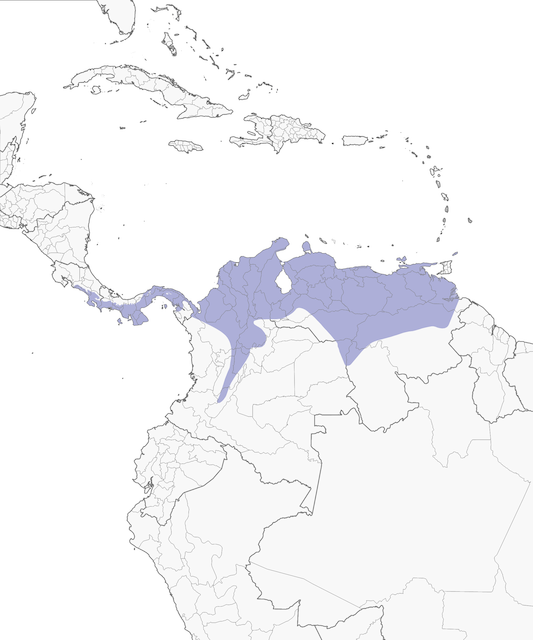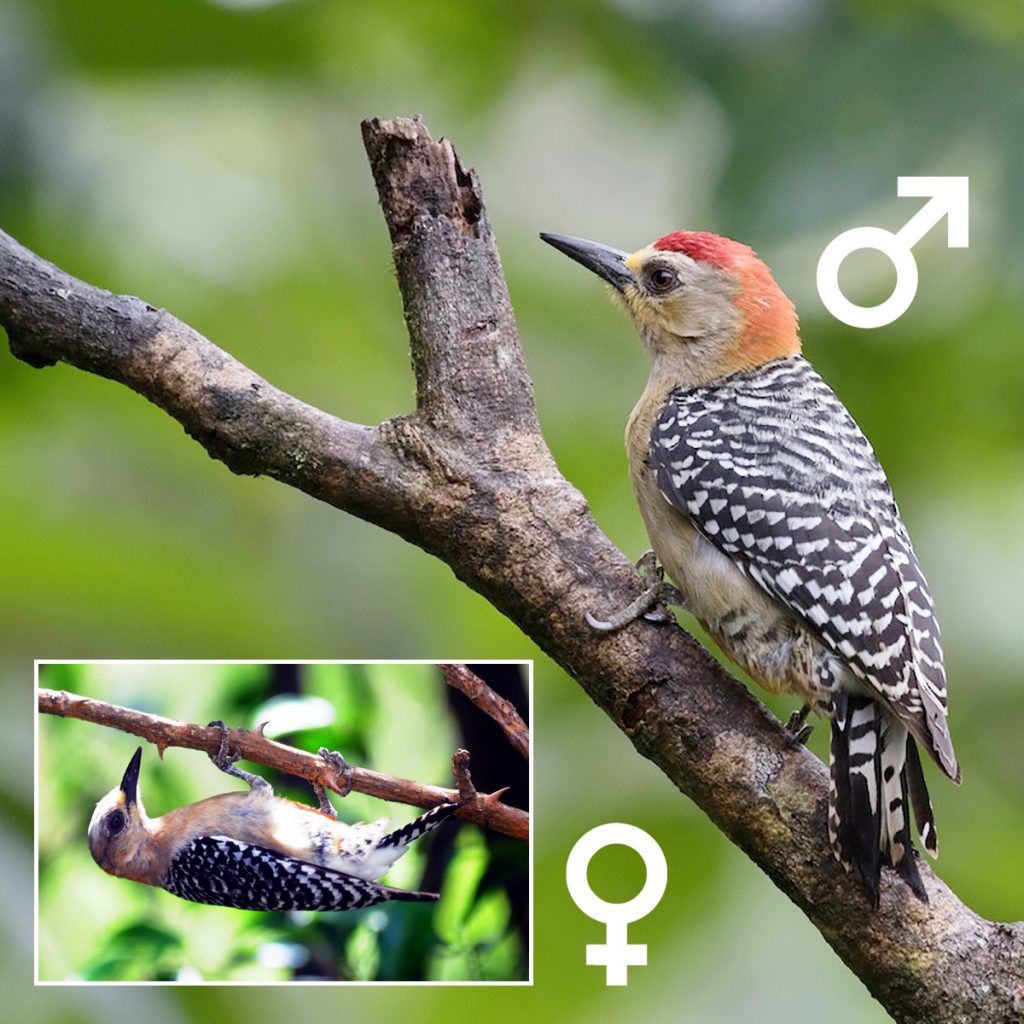Red-crowned Woodpecker
Regional Species
The Red-crowned Woodpecker is a common woodpecker in forests, open woodlands, agricultural areas, parks and gardens. Pairs stay together year-round, but sleep in separate holes. The Red-crowned Woodpecker forages individually or in pairs at all levels of the forest. It can be seen going up and down tree branches and trunks searching for food. The Red-crowned Woodpecker feeds primarily on insects, but it also eats fruits and nectar.
Range

Habitat
![]() The Red-crowned Woodpecker is a common bird in semi-open woodland, forests, cultivated areas, parks and gardens. In areas with full wooded coverage they are more likely to be found at higher levels, while in more open areas, they tend to come to lower levels.
The Red-crowned Woodpecker is a common bird in semi-open woodland, forests, cultivated areas, parks and gardens. In areas with full wooded coverage they are more likely to be found at higher levels, while in more open areas, they tend to come to lower levels.
Food
![]() Red-crowned Woodpeckers forage individually or in pairs at all levels of the forest, searching for insects, fruit, even taking nectar from flowers.
Red-crowned Woodpeckers forage individually or in pairs at all levels of the forest, searching for insects, fruit, even taking nectar from flowers.
Behavior
![]() The Red-crowned Woodpecker pairs stay together for the whole year. However, the female and male sleep in separate holes. Both male and female birds drum and give hard rattling calls in their territory.
The Red-crowned Woodpecker pairs stay together for the whole year. However, the female and male sleep in separate holes. Both male and female birds drum and give hard rattling calls in their territory.
Nesting
![]() The Red-crowned Woodpecker nests in cavities of dead or living trees as well as in wooden posts. The female lays 2 eggs, which are incubated by both sexes. Both parents feed the chicks.
The Red-crowned Woodpecker nests in cavities of dead or living trees as well as in wooden posts. The female lays 2 eggs, which are incubated by both sexes. Both parents feed the chicks.
Appearance
Size & Shape
The Red-crowned Woodpecker is a medium size woodpecker of 16 cm to 20 cm in length.
Color Pattern
The Red-crowned Woodpecker often appears pale overall with a boldly black-and-white striped back. The male has a flashing red cap and nape. The female Red-crowned Woodpecker has a paler crown with a small red part on the back of the neck. Juvenile birds are also paler than the male, particularly in the red areas of the neck and head.
Similar Species
The Black-cheeked Woodpecker is similar in size and shape to the Red-crowned Woodpecker. However, the Black-cheeked Woodpecker is darker overall, has a big black mask, a white patch behind the eye, black upperparts with narrow white bars, and a large white rump patch. The male has full red crown while the female has a grayish forecrown and a red hindcrown.
Did you know?!
- Pairs stay together year-round, but sleep in separate holes.
- Both males and females drum and give hard rattling calls in their territory.
